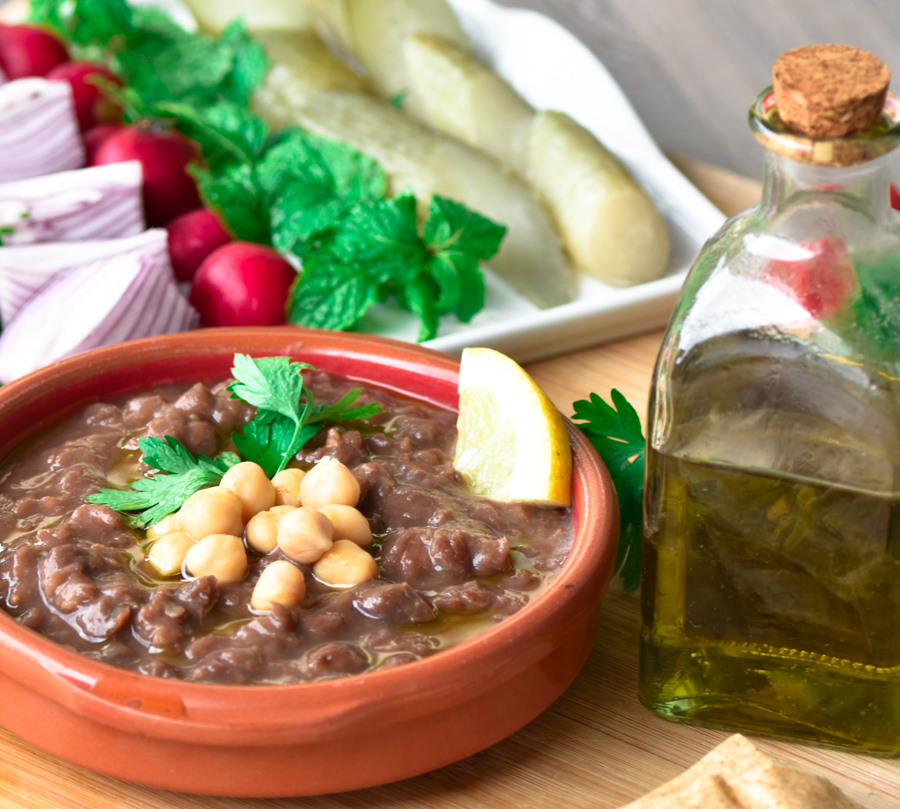
Lebanese and Middle Eastern Breakfast and Brunch Recipes
Embrace your real life morning with these nourishing and enticing Lebanese breakfast and brunch recipes. Whether you’re serving up a warm holiday breakfast, need to make a brunch with a Lebanese theme, we got you covered with these recipes from our archives, they’re just right whenever you want a dose of comfort — they will give your morning a whole new spin!
Lebanese and Middle Eastern Breakfast and Brunch Recipes
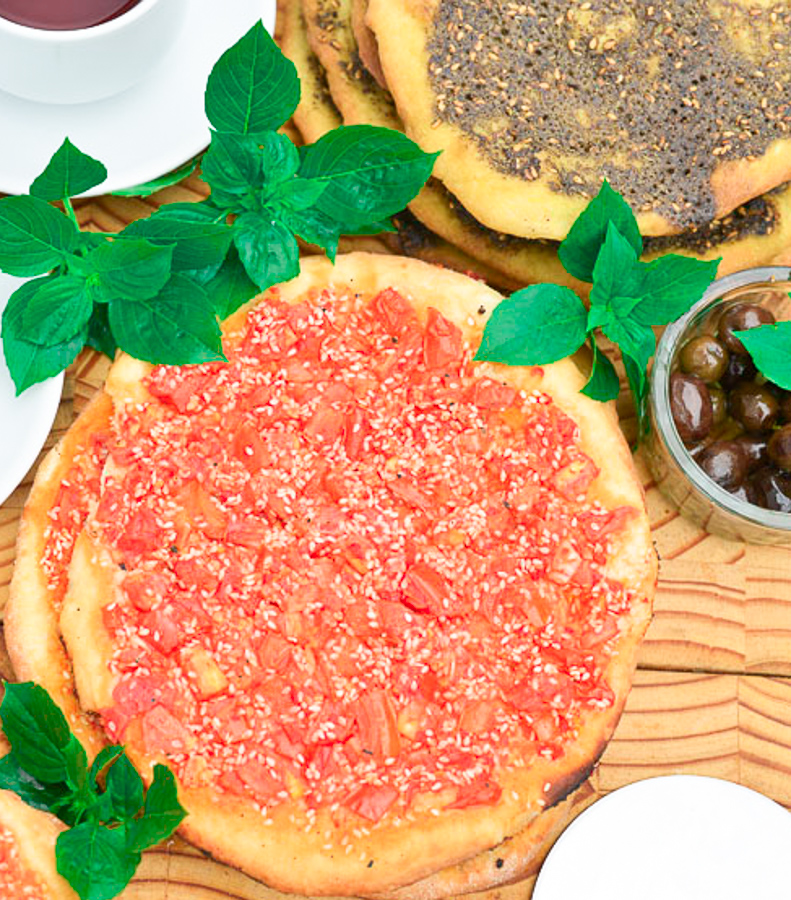
Vegetable or Zaatar Manakish are one of the most popular breakfasts in Lebanon. Almost all bakeries start selling these treats early in the morning. It is difficult to pass by without being drawn by the irresistible smell – and still they taste ten times better! A staple breakfast in Lebanon and a classic that is found in every street corner bakery in Beirut – even the smallest village in Lebanon has at least one bakery that sells manakeesh.

Foul Medames: Though beans for breakfast may sound odd to some cultures, but if you spent in Lebanon, Egypt or the Middle East anytime then you know “foul medames” and sometimes spelled “ful”, is a daily ritual served typically for breakfast and brunch. Foul aka fava bean is a grain that dates back to ancient time, it has been part of the Middle Eastern diet since the 4th century. Foul medames is beloved for many reasons, it is tasty, frugal, filling, nutritious and proven to be very beneficial to gut health! It is naturally vegan and loaded with protein, fiber, iron and magnesium.

Knafeh/kunafah is eaten is for breakfast; local sweet shops in Beirut sell this treat early in the morning sandwiched in a sesame bread. When you walk in the door of any of these shops, you will be drawn by the heavenly aroma and the sweet scent of the orange blossom water. In Lebanon no one bothers to make knafeh at home. Here is a tasty version using bread instead of semolina dough.

Shanklish: The Middle Eastern version of blue cheese, and the only aged cheese in the region. Shanklish can be found in most grocery shops all over Lebanon, Syria and Turkey. If living abroad, you must have seen shanklish on the shelves of Middle Eastern food stores, those vacuumed cheese balls with an off-white interior, crusted with zaatar or Aleppo pepper. The most common way to eat shanklish is to crumble it, and mix it up with diced tomatoes, onions and freshly chopped parsley with a generous drizzle of extra virgin olive oil. Tear off pita bread/ Arabic bread and scoop it up with shanklish.
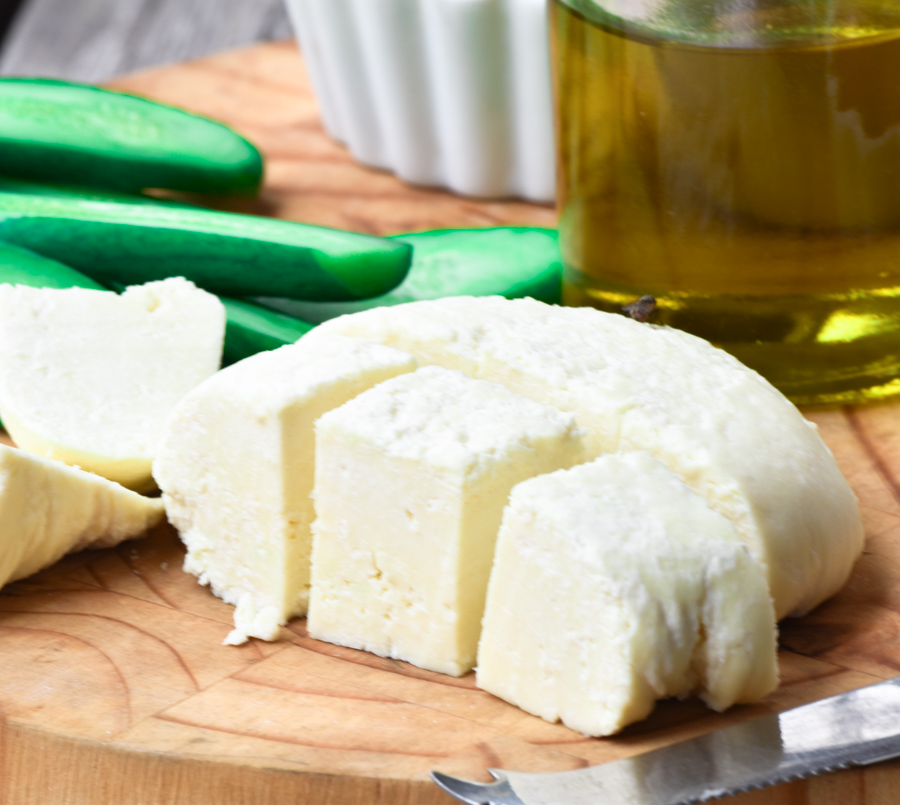
Jibneh baladi (baladieh)/ Jibneh Khadra: Every country in the world has their own great cheeses, and Lebanon is no exception! While Lebanon doesn’t have the kind of cheese making varieties found in France, still the country produces some great white cheeses that deserve a spot. The best dairy production in Lebanon is in Beqaa region where a broad fertile valley nestled in Eastern Lebanon and home to extensive dairy farming, some of these farms date back centuries where most have passed from generation to generation. The region’s main production is labneh, shanklish, halloumi, Akkawi, double crème, kishik, baladi and other white cheeses made of unpasteurized mixture of goat, cow and sheep’s milk. Here is a great recipe to make Jibneh Baladi (baladieh)from scratch. It is a firm and sliceable white cheese popular in Lebanon and commercially available everywhere.
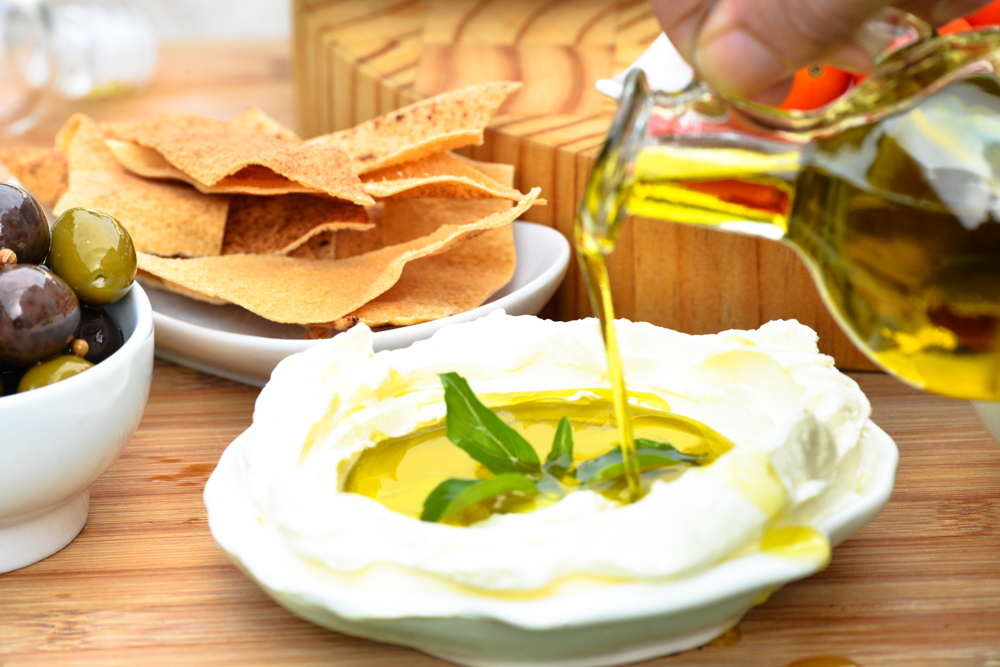
Labneh: A staple breakfast in every Lebanese home and one of my favorite foods ever! The process of making labneh is easier than you might imagine. Season plain yogurt with some salt and strain for 12 hours, or if you want your labneh thick, strain for 24 hours. A versatile dip that can served as a sandwich spread or a dip, or even with Arabic bread or crackers!
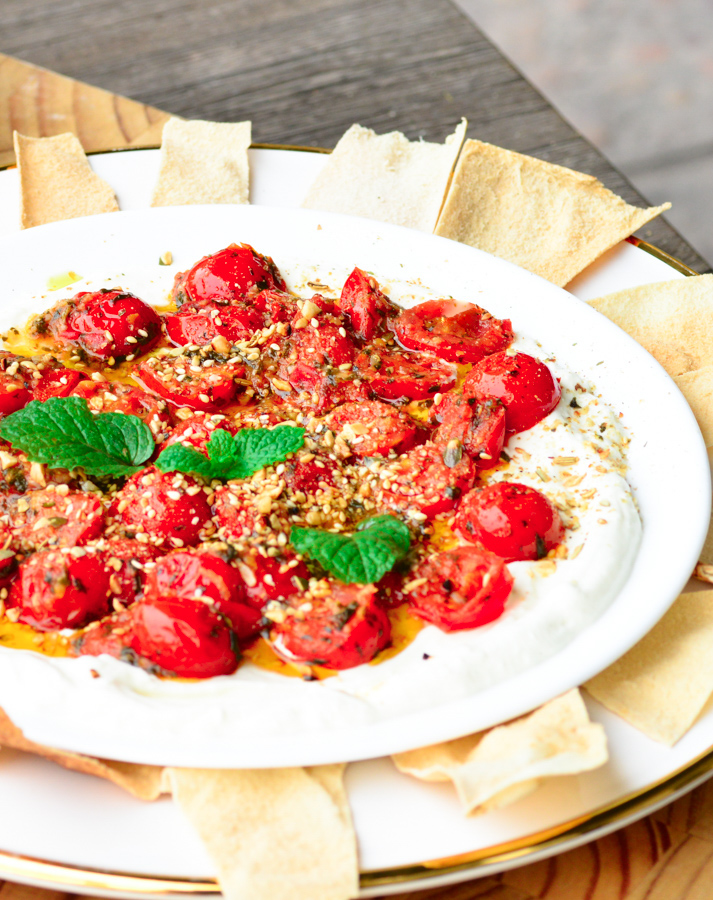
Labneh with Garlicky Cherry Tomatoes and Dukkah: This is my take on the classic labneh. You will be going with a simple classic Lebanese spread like labneh and transform it to a festive looking plate with multi layers of textures and flavors. Together they will hit all the flavor notes to create an epic breakfast.
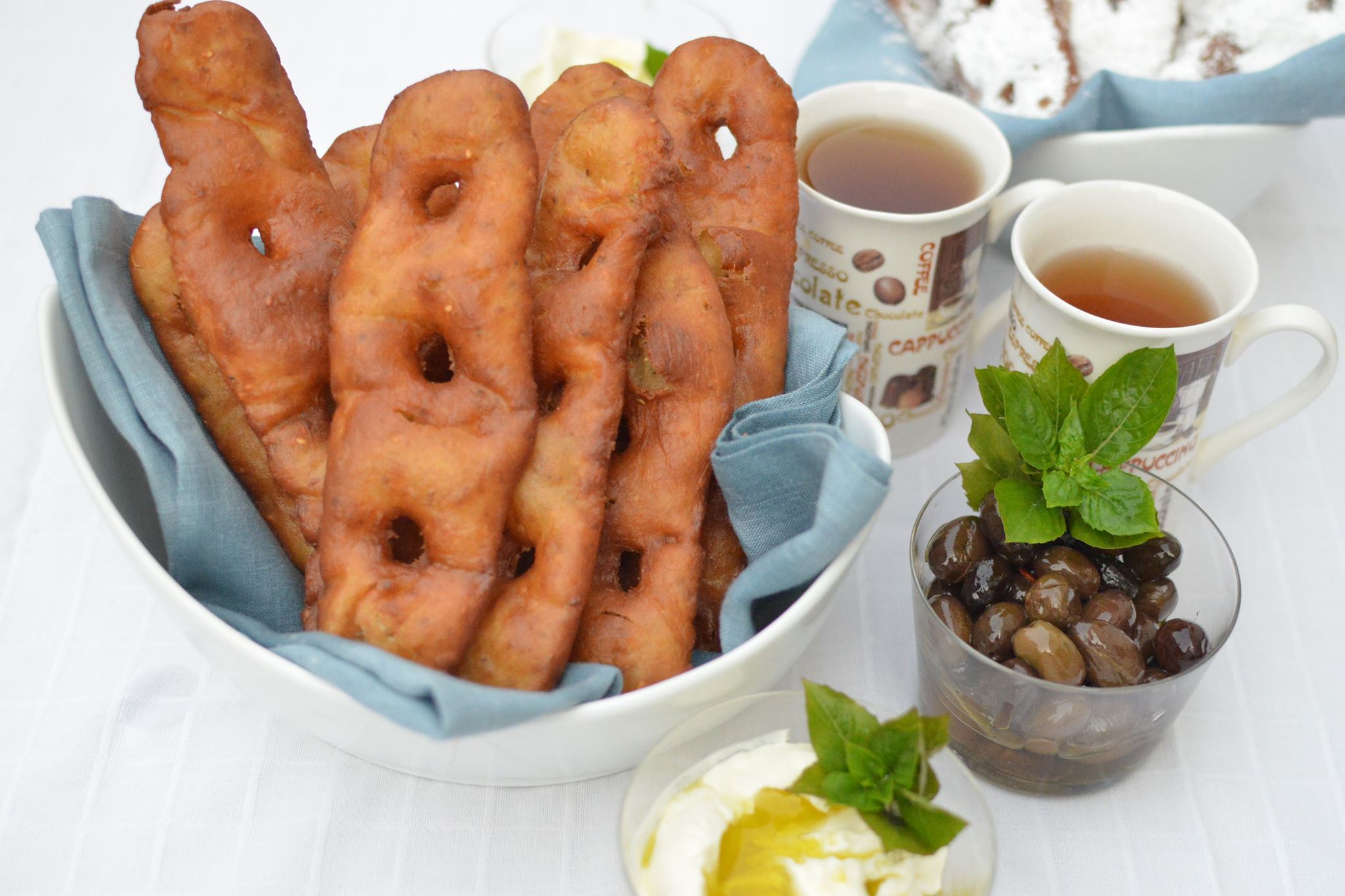
Zalabia: I guess every culture has their own fried dough specialties. Zalabia (Lebanese sweet fritters) – one of our favorite breakfast treats alongside Manakeesh – are traditional deep fried treats that are made of fermented dough. Serve it will labneh or white cheese.
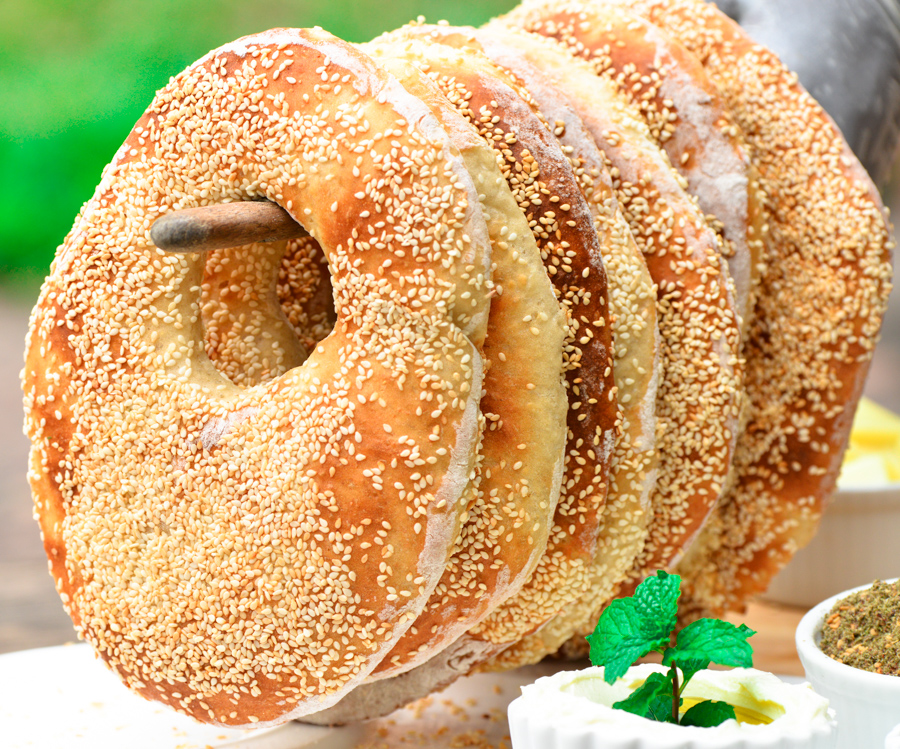
Kaak Al Asrieh: The quintessential Lebanese street bread! A handbag-like shape savory roll covered with sesame seeds – crispy on the outside and chewy a bit, baked in a flame oven and sold through cart vendors in Beirut – a street food and an ideal snack on the go, usually eaten handheld, that can be equally good for breakfast paired with a cup of tea.
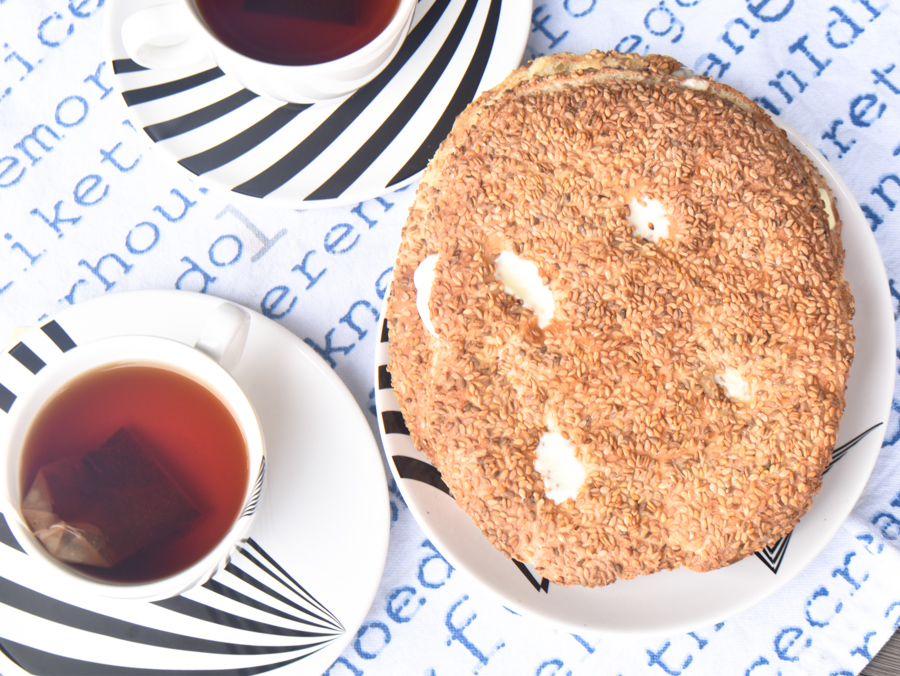
Kaleeta/ North Lebanese Flat Kaak are popular choice for breakfast; duck into communal neighborhood ovens in Tripoli, Lebanon, and you’ll likely spot these sesame rounded loaves everywhere, and sometimes you can pick them up at roadside stands, they have a slightly crisp exterior, usually thicker than pita bread, and are a favorite treat when layered with cheese and grilled on griddle or a panini press to give the plump flatbreads a deliciously toasted crust and a melted cheese steaming interior—a belly filling breakfast or snack that is a nourishing part of daily life.

Lebanese Milk Kaak/ Kaak Bhaleeb is a favored sweet ring bread that is plushy and pillowy, where every bite collapses softly in your mouth; it has a golden hue, and an agreeable mahlab flavor — might be the rolls of your dreams. Artisanal bakeries in Zahle — the largest city in Beqaa governorate— are famed for making “kaak bhaleeb/Lebanese Milk Kaak”! Every time I visit Zahle I eat a crap-ton of the stuff and purchase bags to bring back home to my loved ones as edible gifts!
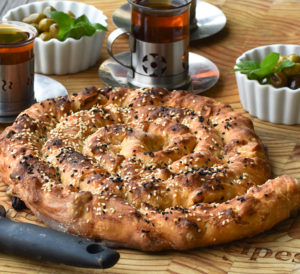
Borek or Burek a savory flaky pastry associated with Turkey and Balkan countries: Serbia, Bosnia, Armenia, Macedonia and North Africa etc… I had 8 different verions during my last visit to Istanbul, they come with various ingredients such as eggplant, spinach & cheese, minced meat., etc..Literally, there is a burek family in Turkey that differs in terms of shape and filling , they are indispensable, and are completely integrated into the lives of Turks; they can be found in every pastry shop across the country and are served for breakfast, lunch and dinner. The pastry is made with layers of “yufka bread”, similar to phyllo dough with a softer and thicker texture. I broadened the idea and experimented with kishik and walnuts, and the taste exceeded my expectations, beyond delicious!
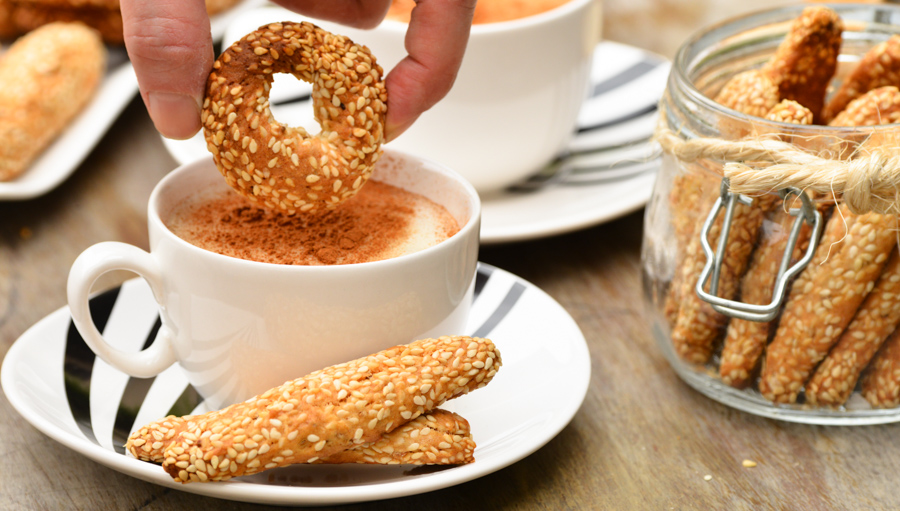
Lebanese Sweet Kaak: Crispy, crunchy Lebanese sweet kaak cookies are perfect to dunk them in a cup of hot milk or tea as a light and fast breakfast. Seasoned with anise seeds and mahlab, their flavor is warm and fragrant, and are coated with sesame seeds that add a nutty agreeable character; if you have been raised in Lebanon, then you must have seen them gracing the windows of most Lebanese bakeries.

Lebanese Fried Eggs with Garlic and Sumac: The fried eggs are loaded with flavor, thanks to the sumac, olive oil and garlic. To make it an ideal Lebanese breakfast, serve “Fried Eggs with Garlic and Sumac” with tomatoes wedges, cucumber slices, olives, Lebanese bread and a cup of tea.
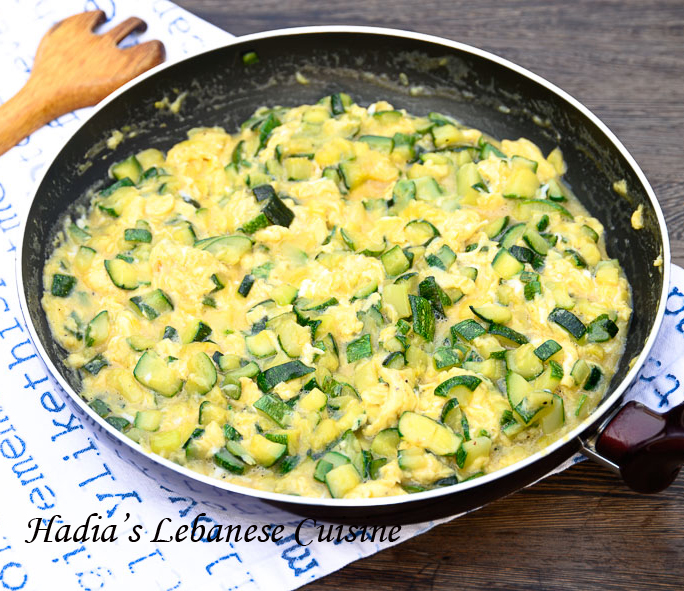
Zucchini Scrambled Eggs/ Koussa Wbeid: A one skillet meal that is light, fluffy, and delicious. With simple few ingredients, you will end up with a whole satisfying breakfast. Enjoy it with Lebanese or pita bread.
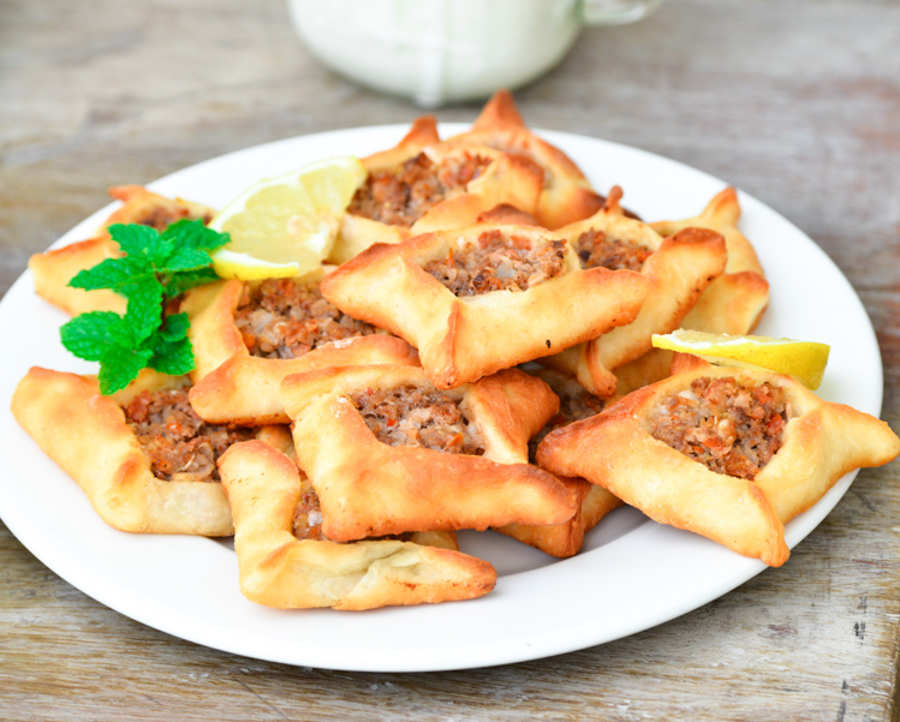
Sfeeha/ Lebanese Meat Pies: Their crispy exterior with their steamy soft meat interior take them to the top list of comfort food! Though thay are more known to be served for lunch, it is common practice to serve sfeeh for breakfast. You will find sfeeha at all bakeries in Lebanon – these hand-pies are portable and delicious!
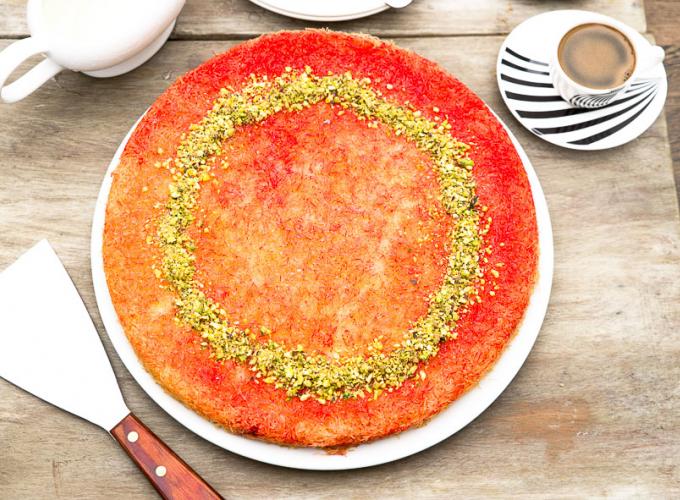
Nabuliseh/ Nabulsi Kunafa: I guess there is not much a Middle Eastern dessert that is appealing as a freshly ooey gooey knafeh/kunafa piping hot from the oven. Here is a different version of knafeh/ Kunafa from that I grew up eating in Beirut! Knafah Nabulsia/ Kunafa Nabulsia hails from Palestine, specifically from the city of Nablus in the West Bank. A Cheesy-stretchy cake gloriously encased with crispy browned shredded filo pastry, drizzled with sugar syrup.
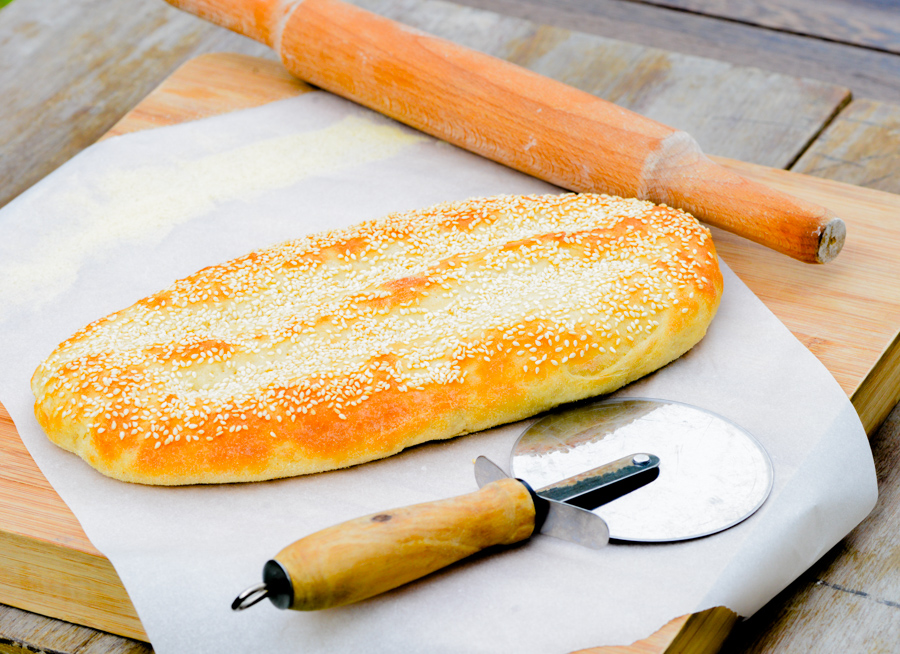
Meshtah: A regional flat bread that is native to South of Lebanon, serve it with fried eggs, cheese and labneh with a cup of tea.
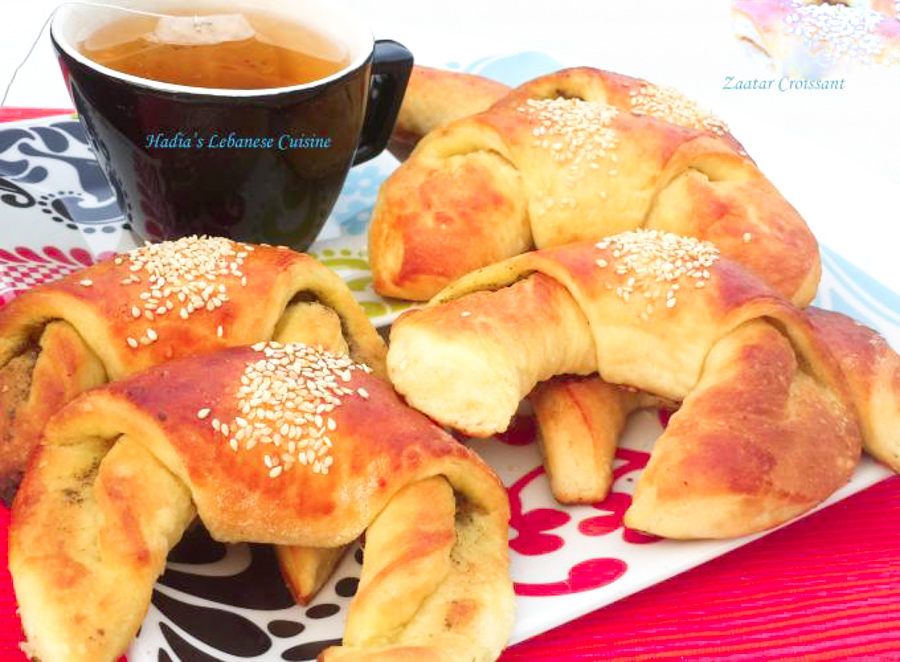
Zaatar Croissant: Everyone is familiar with the croissant as a staple of French cuisine. Here is a Lebanese twist of flaky, buttery crescents with a pocket of za’atar that is topped with sesame seeds. Almost all bakeries or pastry shops sell zaatar croissant for breakfast in Lebanon.
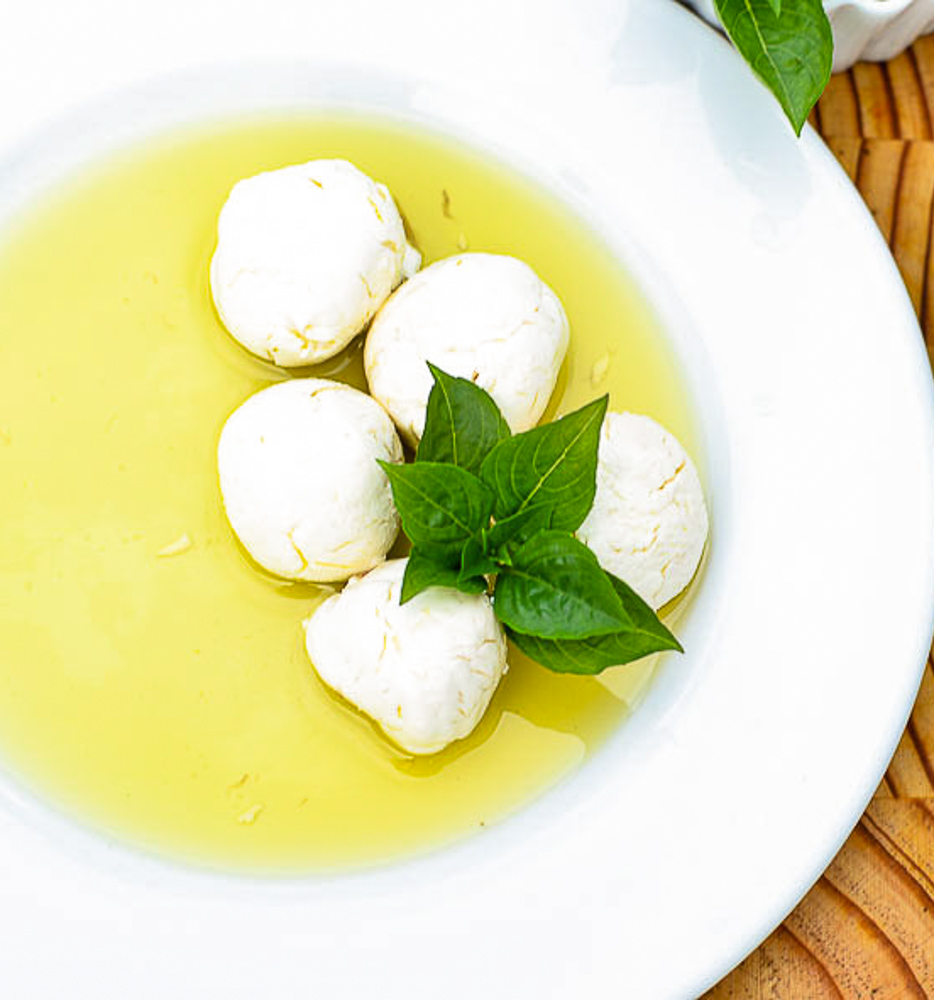
Labneh balls / Yogurt Balls steeped in olive oil. Eaten in Lebanon for breakfast and served with cucumber slices, tomato wedges, olives, pita bread or even crackers and a cup of tea! Turn those simple ingredients into a feast!
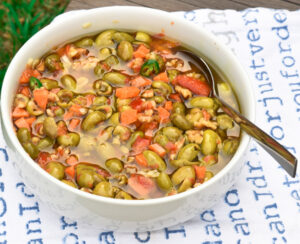
Olive Makdous/ Makdous el Zeitoun: As much as I like eggplant makdous — especially the ones coming from highly skilled households in Baalbak Lebanon — I love the manipulated olive makdous even more. The olives married with red bell pepper, walnuts, carrots, galic and olive oil create a blend that is not only big-flavored, but has a lovely palette of various vibrant colors — if you’re looking for an excuse to use good Mediterranean ingredients, this is it, “Olive Makdous”. Serve with fried eggs labneh and warm bread!
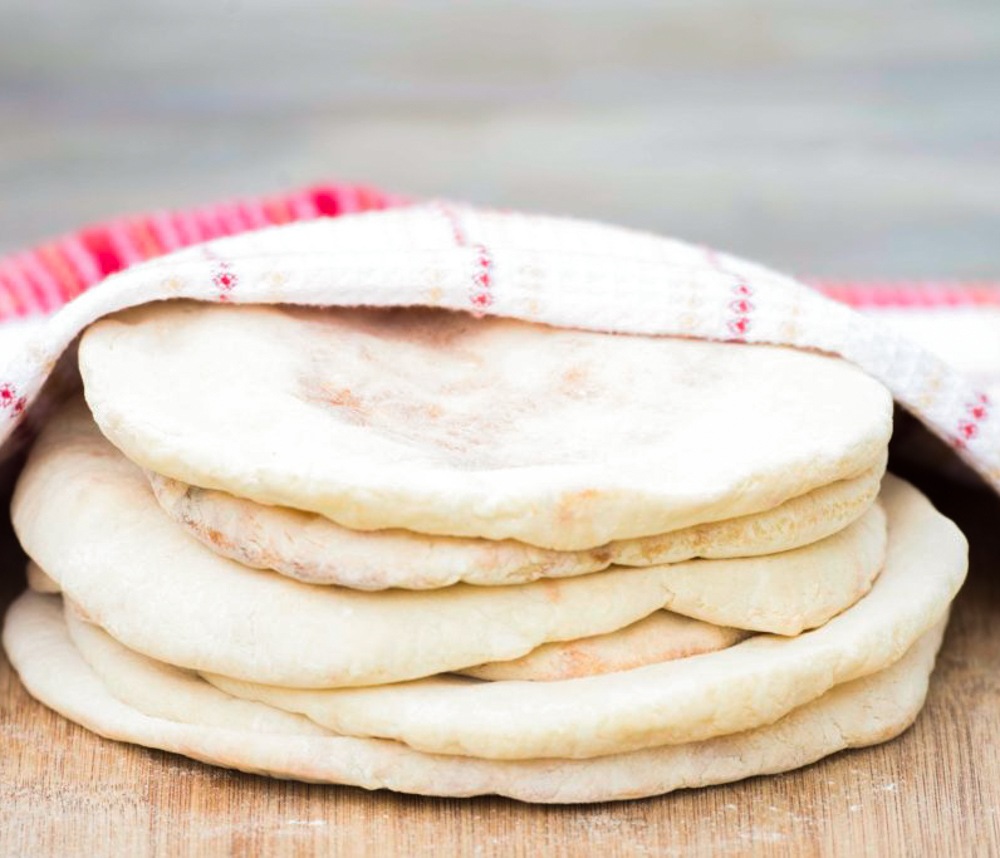
Pita bread / Arabic Bread or Lebanese bread, as some call it, plays a significant role in Lebanon and Middle East. A daily ritual and no meal is complete without it; it is eaten to scoop everything up with, a perfect accompaniment to almost all Lebanese and Middle Eastern food.
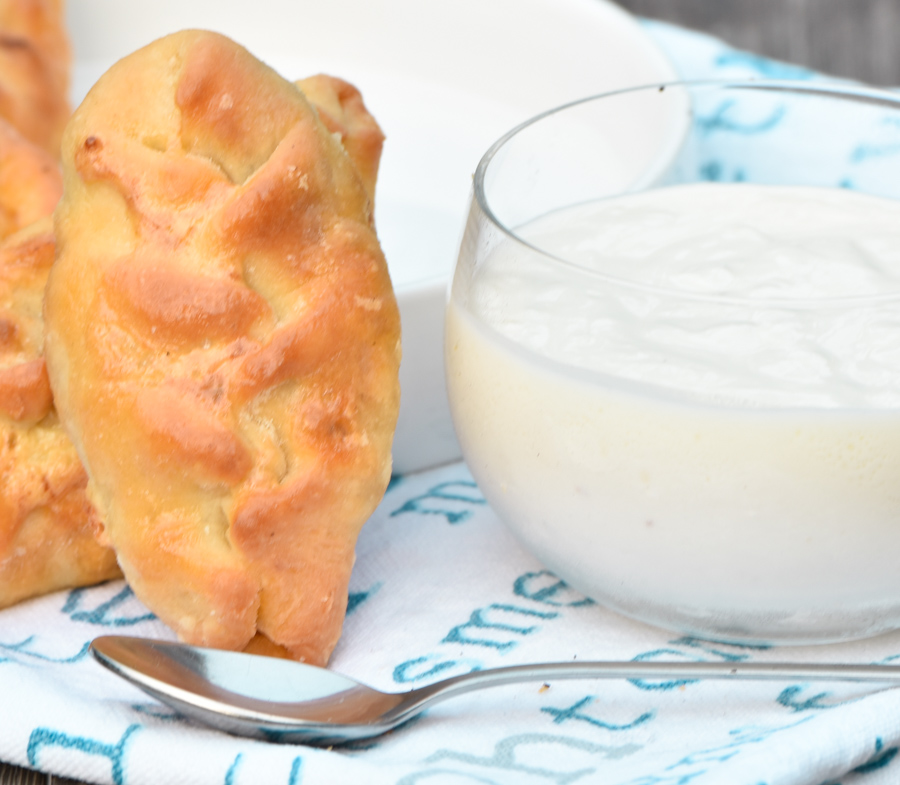
Lebanese Meat Fatayer sit firmly on our list of favorite comfort foods. They show up in Lebanon and the Middle East on gatherings, wedding buffet lines and every special occasion, but they make a comfort breakfast or brunch recipe with a some yogurt on the side. These savory, and flavorful meat fatayer, with their soft center and perfectly golden crust, hit all the delicious notes needed to satisfy the family!
Thank you to all the readers who purchased “Hadia, Lebanese Style Recipes”. If you have a minute to spare, please rate and review the book on Amazon. We would like to know what you think! Here is the link to AMAZON
If you make any of the Lebanese breakfast recipes, leave a comment below, or share your pictures on Facebook! I would love to see your creations!! Hashtag, #Hadia’s lebanese Cuisine
Subscribe to Our Newsletter
About Chef
Hadia Zebib
I am Hadia, the face behind Hadia’s Lebanese Cuisine. I grew up in Beirut Lebanon and I currently reside in Kinshasa, Congo with my husband and my three adorable sons, ...
Read more about this chef..


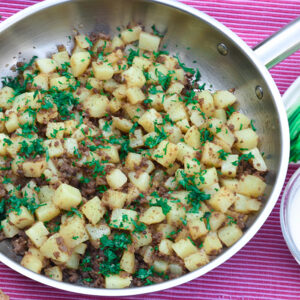
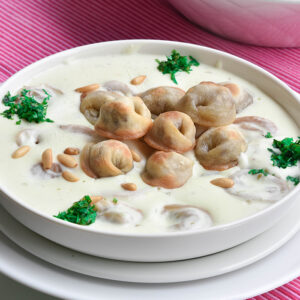


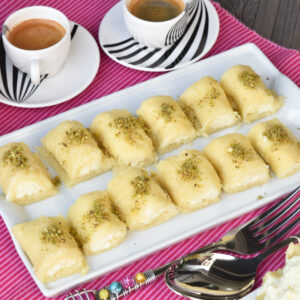
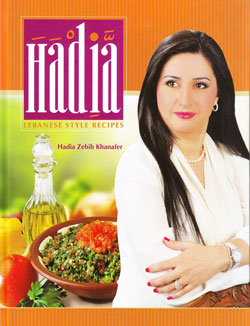
No comments yet.